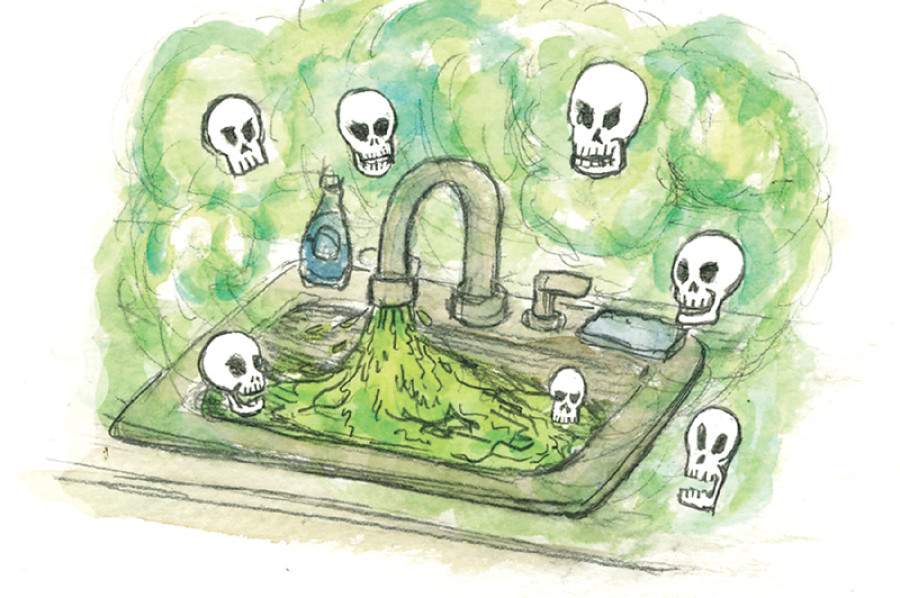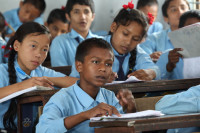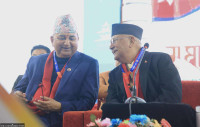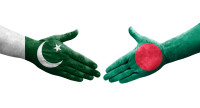Opinion
Urban water crisis
Nepal does not lack water but the wisdom to manage it effectively and efficiently
Sun Xi
There is an ongoing water crisis in Nepal’s urban areas, and it is mainly man-made. From 2000 to 2012, Nepal’s urban population with access to improved water source suffered a continuous and outstanding drop from 94.2 percent to 90.3 percent.
The 4 percent drop is exceptional and alarming. At certain core city areas, the dissolved oxygen (DO) levels were even below 1mg/l, which showed that the water was anoxic and poisonous for aquatic lives. According to the public health department of Nepal, 3,500 children die per year due to water-borne diseases such as diarrhoea, dysentery, cholera and skin diseases.
In fact, during the same period, Nepal’s Gross National Income per capita tripled from $230 to $700, and its urban population with access to improved sanitation facilities increased from 41.9 percent to 51.2 percent. But, why do its urban residents have less and less drinkable water?
Dirty water
A factor behind the prevailing situation might be Nepal’s fast growing urban population, which increased from 13.4 percent in 2000 to 17.5 percent in 2012. In past years, Nepal’s urbanisation rate of 2.03 percent was much higher than the global average of 0.9 percent. Urban population in the Kathmandu Valley accounted for 60 percent, and there was a fast-paced population growth in the valley with a 4.3 percent annual growth rate on average from 1991 to 2011.
However, the more profound reason for lack of clean water is pollution. Latest research shows that urban drinking water sources in Nepal, even including water reservoirs with treatment plants, are heavily contaminated with faecal coliform and other bacteria.
According to the Economic and Social Commission for Asia and the Pacific (UNESCAP), the main cause of water pollution in Nepal is the lack of sanitation infrastructure. Nepal’s rate of access to improved sanitation (35 percent) has been constantly much lower than that of other countries in Asia and the Pacific (59 percent).
Foreign aid
To improve the situation, the best bet for the government is to build more water sanitation infrastructure. To expedite the construction of such water sanitation infrastructures, foreign aid can be very helpful. According to a recent study, foreign aid disbursements produce a strong, positive, and significant effect on improved access to the Water Supply and Sanitation (WSS) facilities, and favourable effects to enhance access to WSS facilities in rural as opposed to urban areas.
These two findings are applicable to Nepal as well. From 2000 to 2012, while the net official development assistance and aid Nepal received grew from $386 million to $770 million, its total population with access to improved water source also increased from 77.1 percent to 88.1 percent, with an increase from 74.4 percent to 87.6 percent in rural areas, but a surprising drop in urban areas.
However, the research also finds that foreign aid disbursements are effective only in lower middle-income countries, and not in low-income countries or in upper middle income countries. Unfortunately, Nepal is a low-income country. Therefore, Nepal may have to raise its income level before foreign aid can prove to be more effective in this area.
Better management
Academic research shows that improving water governance holds the key to improving water security in developing countries. This is also the case in Nepal’s failed water story.
Water is not scarce in Nepal. In 2011, Nepal’s renewable internal freshwater resources per capita was 7,740 cubic metres. (It was a significant drop from 11,034 cubic metres in 1992.) By comparison, with only 110 cubic metres per capita, Singapore has successfully transformed from a water-scarce developing nation to a world leader in the field of water management within just three decades.
Obviously, what Nepal lacks is mainly good governance in water resources. Typical problems include ineffective water-related legal framework, policies and organisational structures, ignorance of local authorities regarding water quality issues and lack of properly trained technicians at waste water treatment plants.
A study by the United Nations University reveals that urban water quality in the Kathmandu Valley is not good enough to sustain a healthy water ecosystem, because most of waste water treatment plants here are unable to function properly and the sewage mixes directly into the rivers.
In summary, Nepal does not lack water but the wisdom to manage its water effectively and efficiently. Nepal’s urbanisation should aim at enhancing people’s quality of life, and ensuring the supply of clean water is a very basic precondition. Otherwise, such urbanisation is meaningless and unsustainable.
Xi is a consultant for the Institute of Water Policy at the Lee Kuan Yew School of Public Policy, the National University of Singapore




 20.12°C Kathmandu
20.12°C Kathmandu










